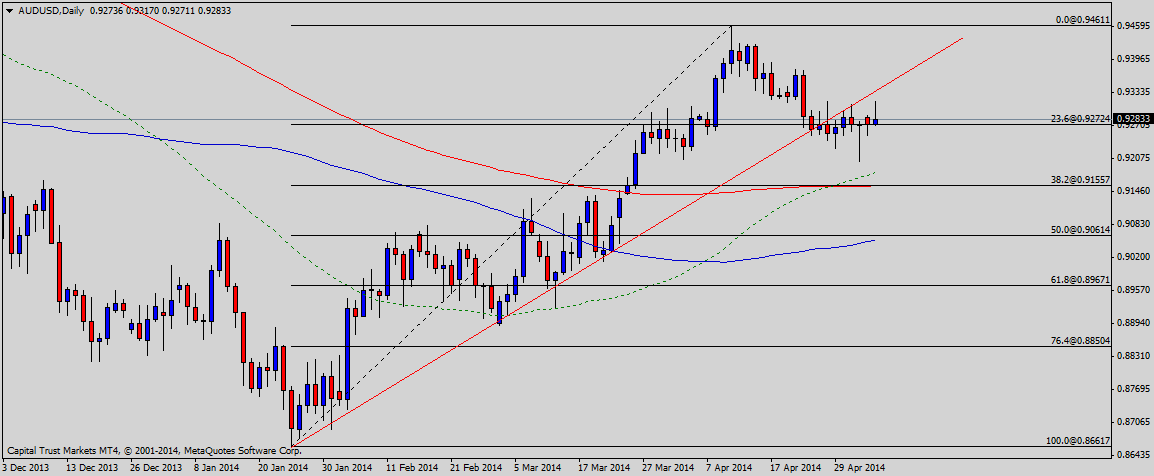FXOpen
The Australian Dollar (AUD) fell broadly against the US Dollar (USD) on Tuesday, dragging the AUD/USD to less than 0.8290 following the Reserve Bank of Australia (RBA) monetary policy announcement. The pair is expected to face a huge resistance near the long term trendline on the daily chart.
Technical Analysis
As of this writing, the pair is being traded near 0.9283. A hurdle may be noted around 0.9330 that is the channel resistance as demonstrated in the following chart. A break and daily closing above the trendline will push the pair into stronger bullish momentum, opening doors for a rally above the 0.9461 resistance area which is the swing high of the last major move.
On the downside, the pair is expected to find a support near 0.9202, the swing low of the bearish pin bar, ahead of 0.9155 that is the confluence level comprising of 38.2% fib level, 200 Simple Moving Average (SMA) and 55 SMA. A daily closing below the confluence support area will aggravate the bearish momentum, exposing 0.8850.
RBA Monetary Policy
The Reserve Bank of Australia (RBA) announced the monetary policy on Tuesday, leaving the benchmark interest rate unchanged amid fragile recovery in the recent past. The bank hoped that many advanced economies would perform a lot better this year, however China is showing some real signs of slowdown. The central bank says that the growth in Australia might pick up during the next couple of years; however the ongoing year can be a challenging year from the growth standpoint. The overall monetary policy statement was quite dovish which consequently triggered a selling pressure in the Aussie Dollar.
Conclusion
Considering the tone of the monetary policy and recent downbeat economic reports pertaining to the Australian economy, selling the pair around the trendline resistance still appears to be a good strategy, the target should be around the confluence level as described above.
Trade over 50 forex markets 24 hours a day with FXOpen. Take advantage of low commissions, deep liquidity, and spreads from 0.0 pips. Open your FXOpen account now or learn more about trading forex with FXOpen.
This article represents the opinion of the Companies operating under the FXOpen brand only. It is not to be construed as an offer, solicitation, or recommendation with respect to products and services provided by the Companies operating under the FXOpen brand, nor is it to be considered financial advice.
Stay ahead of the market!
Subscribe now to our mailing list and receive the latest market news and insights delivered directly to your inbox.









